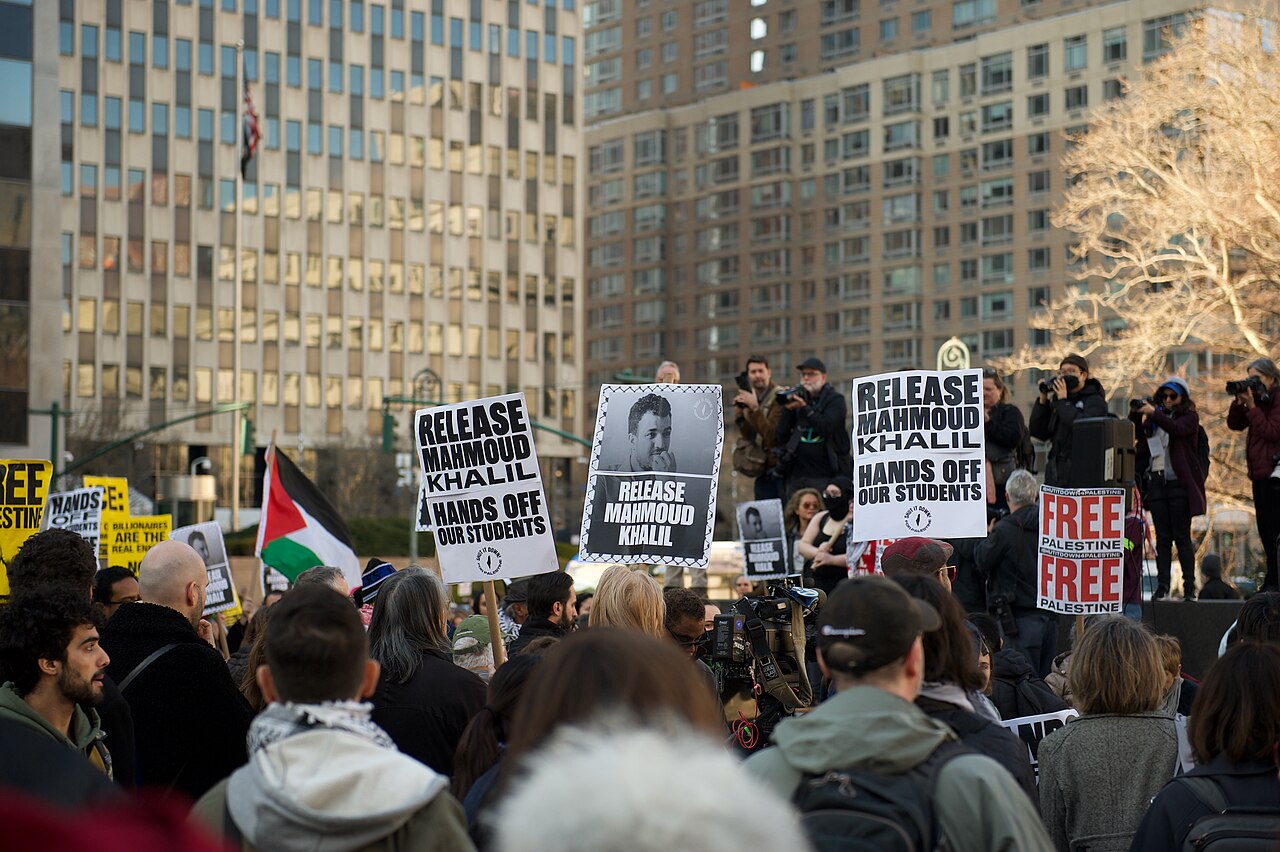International (and Domestic) Terrorism Prosecutions: ISIL, FARC, and the KKK
During the month of December, the Justice Department kept busy with the usual counterterrorism suspects—ISIL supporters (mostly young men) in Virginia, Ohio, and North Carolina were arrested, sentenced, and pleaded guilty in federal district courts. The Department’s counterterrorism headlines over the past few weeks also covered a range of more unusual cases in both international terrorism and domestic terrorism, including the sentencing of an international arms trafficker and a Ku Klux Klan member.
International Terrorism Prosecutions
Published by The Lawfare Institute
in Cooperation With

During the month of December, the Justice Department kept busy with the usual counterterrorism suspects—ISIL supporters (mostly young men) in Virginia, Ohio, and North Carolina were arrested, sentenced, and pleaded guilty in federal district courts. The Department’s counterterrorism headlines over the past few weeks also covered a range of more unusual cases in both international terrorism and domestic terrorism, including the sentencing of an international arms trafficker and a Ku Klux Klan member.
International Terrorism Prosecutions
- ISIL
Twenty-six-year-old Lionel Nelson Williams was the only ISIL sympathizer arrested in December. According to the Justice Department’s press release, the FBI arrested the defendant in his Suffolk, Virginia home on December 21st, charging him with attempting to provide material support to the Islamic State. As alleged by the complaint, the government’s investigation of Williams began the previous March, when a former associate reported that Williams was supporting ISIL on Facebook and had recently purchased an AK-47 assault rifle in response to the San Bernardino terror attack.
The story that followed was a familiar one: Williams used four Facebook accounts and encrypted applications in his support of ISIL, he spoke with FBI undercover employees online as well as in person and expressed his desire to target police officers and military personnel. In October and November 2016, despite his limited financial means, Williams sent $250 to a person he believed would use his money to buy ammunition for ISIL fighters.
To the extent that a prototypical FBI Counterterrorism subject exists, Williams fits the bill. According to George Washington University’s Extremism Tracker, the vast majority of individuals charged in the U.S. with ISIL-related offenses are U.S. citizens like Williams. Almost ninety percent of the subjects are men, and their average is twenty-seven—only one year older than the defendant.
Another similarly situated defendant, this one in Ohio, was sentenced in early December to 30 years in prison on material support charges. According to the Justice Department’s press release, Christopher Lee Cornell was twenty years old when he hatched a plot to attack government officials during the 2015 State of the Union Address on behalf of ISIL. In August, Cornell pleaded guilty to one count of attempting to kill government employees, one count of possession of a firearm in furtherance of a crime of violence and one count of attempting to provide material support to a designated foreign terrorist organization.
Finally, Justin Nojan Sullivan pleaded guilty to one count of attempting to commit an act of terrorism transcending national boundaries in federal district court in Asheville, North Carolina. An avid ISIL supporter who once poured gasoline over his parents’ religious items, Sullivan also demonstrated a capacity for violence, implicating himself in an unsolved murder as well as a murder-for-hire scheme.
Like Muhanad Badawi, Munir Abdulkader, and Ardit Ferizi, Sullivan communicated with ISIL’s rock star: he was contacted by the now-deceased ISIL leader Junaid Hussain, according to the Justice Department’s press release. Known to inspire his followers to conduct lone wolf attacks, Hussain conspired with Sullivan to organize and conduct mass shootings in North Carolina and Virginia.
As part of this plan, Sullivan recruited an FBI undercover employee posing as an ISIL sympthizer on social media to participate in the attacks, telling the employee that it was better to conduct attacks in the United States than travel abroad. This logic has become common among IIL sympathizers: as access to Syria has become increasingly restricted, sympathizers have routinely responded by changing their destination (like Akram Musleh and Aaron Travis Daniels) or focusing their attention on conducting attacks in their home country.
In June 2015, Sullivan told the FBI employee he was planning to conduct his attack during the next couple of days at a concert, bar or club, where he would kill as many as 1,000 people with his assault rifle and silencer. According to the indictment, in order to fulfill a promise to Hussain, he planned to film the attack.
A few days after this conversation, Sullivan’s parents opened a package addressed to their son containing the functional silencer he planned to use in the attack. Confused, his parents approached the defendant. But unlike most teenagers who fight with their parents, Sullivan became worried that his mother and father would interfere with his attack plans and offered to pay the undercover FBI employee to kill them.
Although the FBI employee politely declined his request, the offer may not have been an empty one. Less than a year later, while in custody on the federal terrorism charges, Sullivan was indicted in state court for the 2014 murder of his neighbor, John Bailey Clark, according to the Charlotte Observer. Clark died of multiple gunshot wounds to the head; his body was later found buried in his backyard. While Sullivan did not admit to the murder in his federal terrorism plea agreement, he did tell the government that he stole a rifle from his father and hid the weapon in a crawl space under his parents’ house; forensic testing later indicated that the .22 rifle recovered from the crawl space was the Clark murder weapon. FBI investigation also indicated that Sullivan planned to use money stolen from Clark to purchase his AR-15 assault rifle, funding his aspirations of terrorism with Clark’s murder. Perhaps not surprisingly, both parties have agreed that in the current federal case, a life sentence would be appropriate.
- Islamic Movement of Uzbekistan
In federal district court in the District of Columbia, Ifran Demirtas, who pleaded guilty in September to providing material support to the Islamic Movement of Uzbekistan (IMU), was sentenced to 88 months in prison. Now 58 years old, Demirtas provided support, specifically funds, to the IMU between January 2006 and May 2008 before he was arrested in Germany on an Interpol red notice and extradited to the United States.
- FARC
In the Southern District of New York, an international arms trafficker was sentenced to 10 years in prison for providing material support to the Fuerzas Armadas Revolucionarias de Colombia (FARC.) According to the Justice Department’s press release, Virgil Flaviu Georgescu, 43, conspired to sell large quantities of military-grade weaponry to the FARC with the knowledge that those weapons would to be used to kill Americans in Colombia.
This case may have wrapped up at the right time—following Colombia’s peace accord with the FARC in November, there has been chatter about removing the group from the State Department’s list of Designated Foreign Terrorist Organizations after 19 years. In August, John Kerry mentioned the possibility of removing the group from the list, while Senator Marco Rubio urged President Obama to maintain FARC’s status.
Unlike every previous case I’ve covered, this investigation was run by the DEA, not the FBI. Using tactics similar to those of FBI, the DEA built the case with three sources who presented themselves to Georgescu as members of the FARC. Beginning in May 2014, Georgescu and his co-conspirators met with one of the sources, who explained to the defendants that he needed weapons to kill the Americans in Colombia. The men agreed to provide the source with the weapons, which were capable of shooting down American helicopters. Georgescu’s co-conspirators included a former Romanian government official who would provide weapons expertise and a former Italian Parliament member who would help secure fraudulent documentation for the weapons to make the sales look legitimate. As with ISIL sympathizers under FBI investigation, Georgescu and his co-conspirators communicated about the weapons purchase using encrypted applications in order to avoid detection by U.S. authorities.
After meeting with the sources five times in Romania and Montenegro, Georgescu and his co-conspirators spent several months travelling to Romania, Montenegro, Italy, Germany, Albania, Poland and Bulgaria, ultimately securing $17 million dollars worth of weapons, according to the indictment. The men then met with the sources on December 15th, showed them a signed contract and discuss methods of payment and transfer to Colombia. Georgescu was arrested by the Montenegrin authorities later that day and extradited to the United States in February.
The case went to trial in May 2016, and Georgescu was convicted following a ten-day jury trial. Georgescu’s two co-defendants, who were extradited to the United States along with Georgescu, pleaded guilty pursuant to cooperation agreements and testified at trial for the prosecution.
Following his conviction, Georgescu faced life in prison, but his attorney asked for a significant downward departure due to his previous relationship with the U.S. Government, including the FBI and CIA.
According to the government, in 2001, the FBI opened Georgescu as a source after he showed up at the FBI office in Las Vegas claiming he knew of criminal activity. For two years, Georgescu reported on criminal activities, mostly credit card fraud, before being closed as a source in 2003. (The defense characterizes Georgescu’s work as investigating Eurasian organized crime.) According to the government’s sentencing memo, Georgescu had no contact with his handling agent after 2009.
Georgescu popped up on the government’s radar again in April 2012, when he called the CIA’s public tip line and reported that an individual had contacted him about brokering a $10 million weapons deal for the Colombians. When he told the operator that he was trying to be useful, the operator replied that the CIA told him they would “take a look at” the information and “get back in touch” if they had any questions. The CIA never called back.
Georgescu would later testify on his own behalf at his trial and claim that this phone call was the impetus for his activities on behalf of the FARC, which he said he had undertaken as a source for the CIA in an unusual display of workplace initiative. However, the credibility of his testimony was called into question when one of his co-conspirators testified that, following their arrests, Georgescu approached him and suggested that they use his call to the CIA to “build a story” about how they were just collecting information to provide to the U.S. Government. Nonetheless, Georgescu escaped a life sentence.
Domestic Terrorism Prosecutions
- Dirty Bombs and the Ku Klux Klan
On December 19th, in federal district court in Albany, New York, Glendon Scott Crawford, a 52-year-old father of three, was sentenced to 30 years in prison for plotting to kill Muslims using a weapon of mass destruction. He had faced a maximum sentence of life in prison.
Crawford’s case is unique—not just because of the defendant himself, who the presiding judge described as “bizarre,” and who described himself as a cross between Darth Vader and Forrest Gump, according to the Albany Times Union. In fact, Crawford is the first person to be found guilty of attempting to construct a radiological dispersal device in violation of the “dirty bomb” statute. Congress passed the statute as part of the Intelligence Reform and Terrorism Prevention Act of 2004 in response to the September 11th attacks and the threat posed by international terrorism.
Ironically, the first person to be found guilty under the statute was a white middle-aged man plotting the deaths of Muslims. According to the Albany Times Union, in surveillance footage shown at trial, Crawford referred to Muslims as “medical waste” that needed to be “sterilized.” Crawford was also found guilty on two additional charges, following the weeklong trial: conspiracy to use a weapon of mass destruction and distributing information relating to weapons of mass destruction.
According to the Justice Department’s press release, Crawford, an industrial mechanic and “self-professed member of the Ku Klux Klan,” hatched a plot to modify a commercially available x-ray machine to kill people by exposing them to lethal doses of radiation. The targets would be killed silently, unaware of their exposure. Crawford scouted mosques in Albany and Schenectady, New York, planning to kill Muslims by placing the radiation machine within a van or truck, parking the truck near the entrance of the mosque, and then remotely activating the device to direct lethal doses of radiation at people leaving the building.
But Crawford’s elaborate plan needed funding, and he began to elicit financial support. First, he approached two Jewish groups in upstate New York, explaining to them that he needed financial support to attack and kill the “enemies of Israel while they slept.” Several months later he took a road trip down to North Carolina where he met with a senior member of the Ku Klux Klan from whom he similarly solicited funds, according to the complaint.
He also enlisted the help of Eric Feight, a fellow engineer at General Electric in Schenectady, New York, whom he asked to help him build the remote initiation device for the radiation machine. Freight eventually pleaded guilty to providing material support to terrorists and was sentenced in December 2015 to 97 months in prison.
Unfortunately for Crawford, FBI sources within the Jewish organizations and the Ku Klux Klan reported the contact and ultimately introduced Crawford to several FBI undercover agents. Posing as businessmen affiliated with the Ku Klux Klan, the agents provided Crawford with a radiation device that the Bureau had rendered safe. Shortly thereafter, the FBI arrested Crawford.
- Garden City Plot
December also saw further activity in the case of three sovereign citizens who had hatched a plot to target the Somali Muslim community in Garden City, Kansas, whose case Ben and I wrote about last month, and the month before. In federal court in Kansas, the prosecution filed a superseding indictment, charging one of the defendants with two additional counts of carrying and using a firearm during and in relation to a crime of violence, in this case the bombing plot. The government also levied an additional charge of being felon in possession of firearms against one of the two co-defendant, who has a domestic violence record.
Alarmingly, the superseding indictment lists twenty-one firearms that one of the defendants owned at the time of his arrest. According to the Garden City Telegram, the three men are scheduled to go to trial on April 25, 2017 in Wichita, Kansas.




.jpg?sfvrsn=d5e57b75_5)
